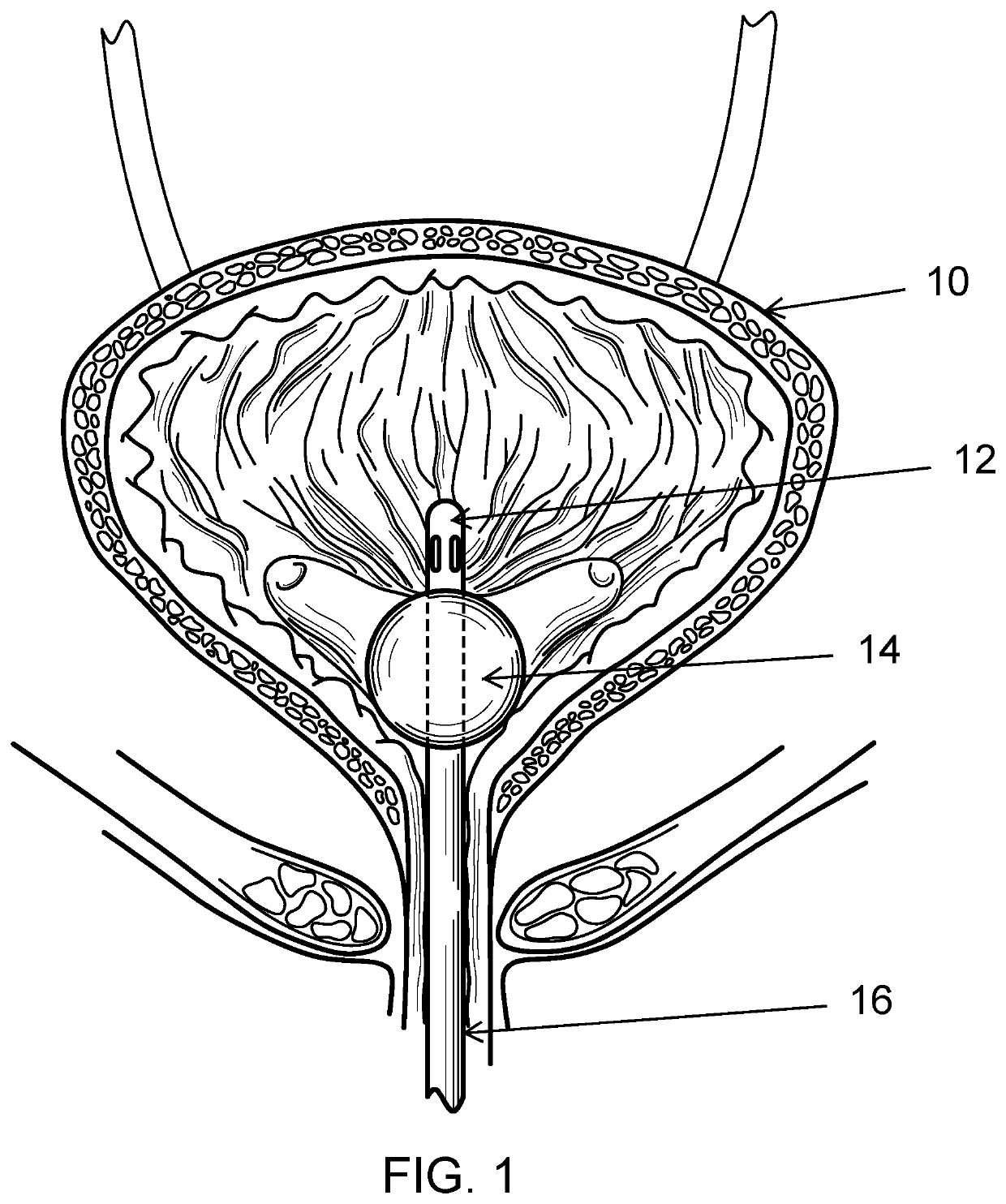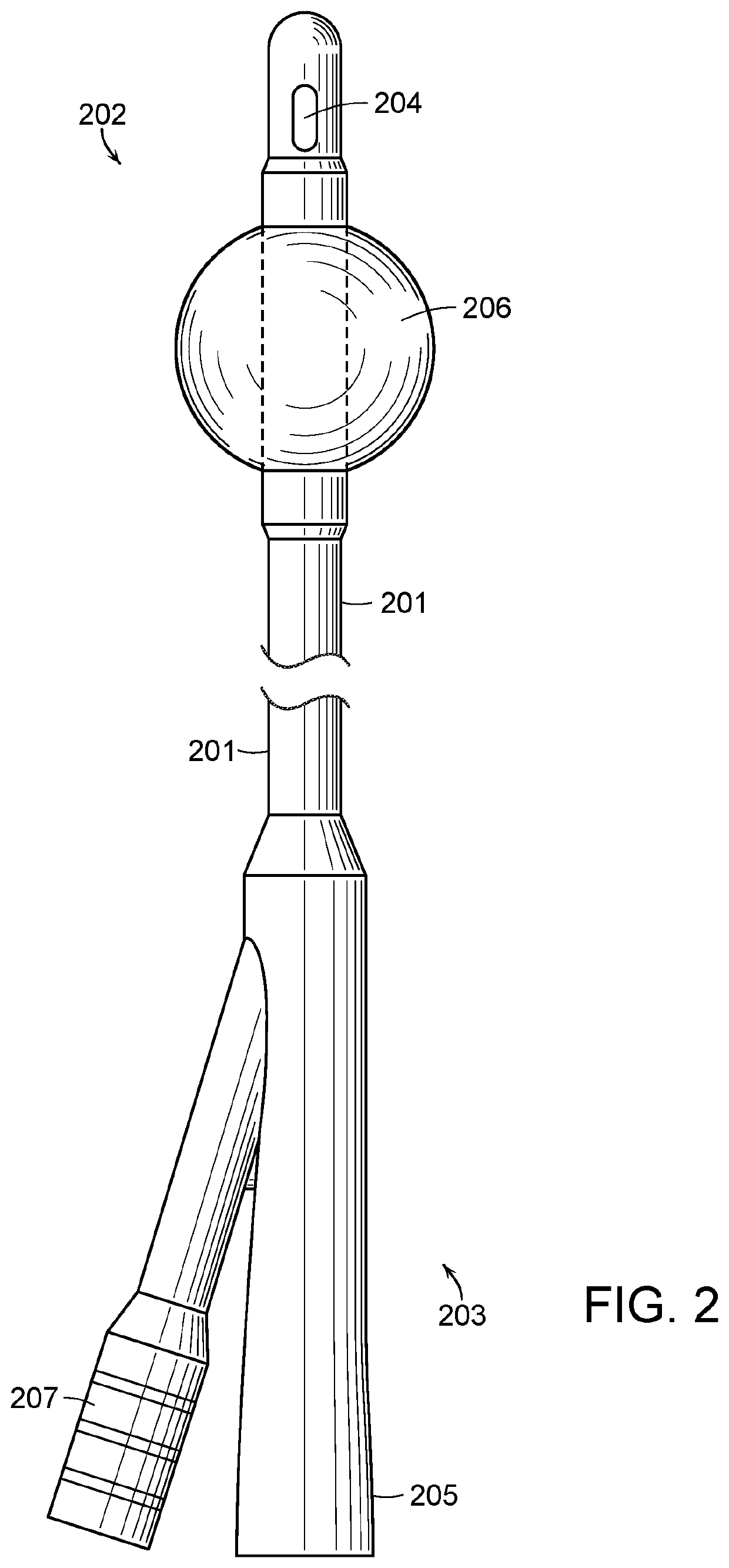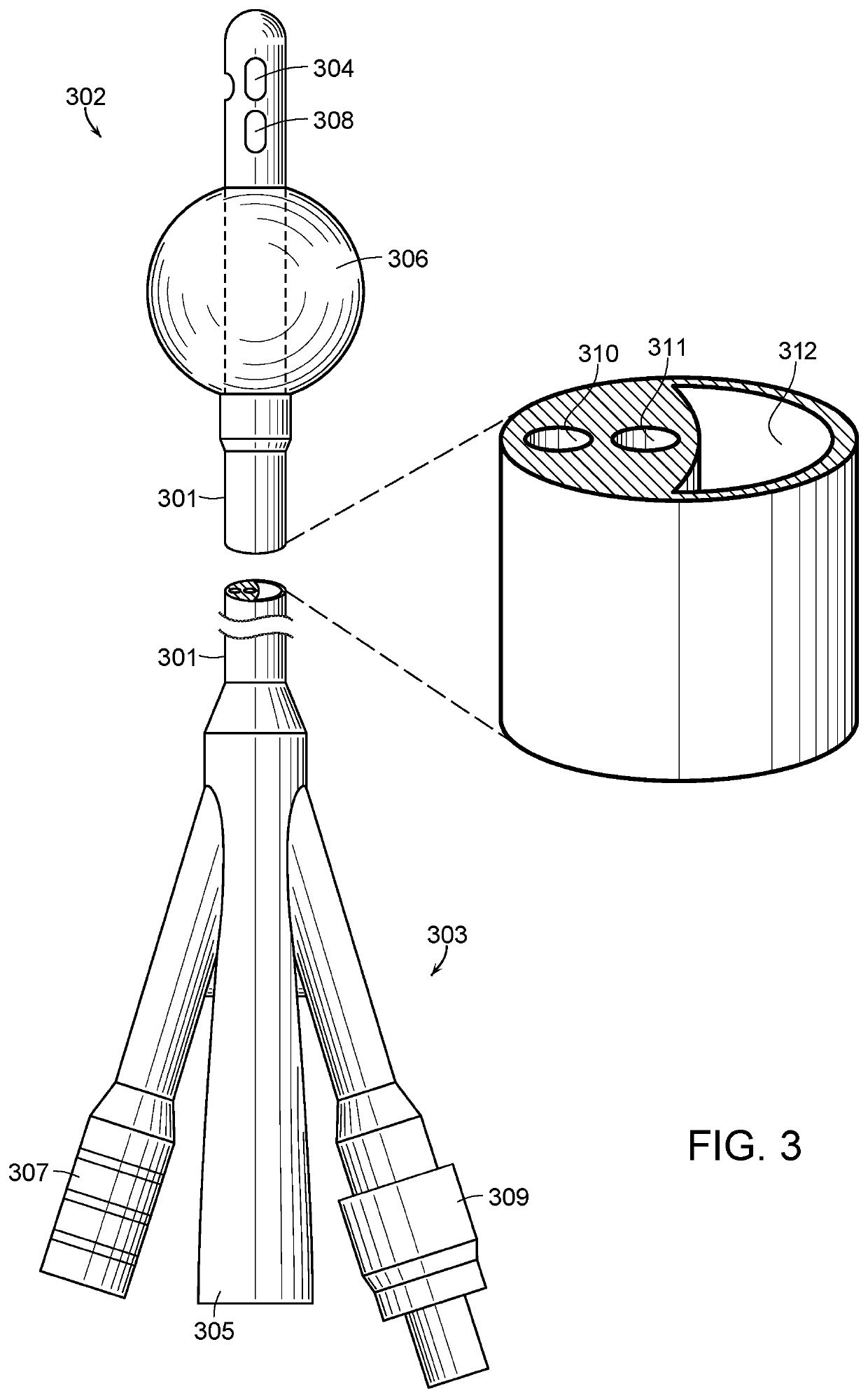Catheter system for continuous irrigation
a catheter system and continuous technology, applied in the field of catheters, can solve the problems of insufficient effect, large cumulative burden of cautis on patients and hospitals, and resistance of biofilms to antibiotics/antimicrobials, and achieve the effect of magnifying the effect of glands
- Summary
- Abstract
- Description
- Claims
- Application Information
AI Technical Summary
Benefits of technology
Problems solved by technology
Method used
Image
Examples
Embodiment Construction
[0035]For the purposes of the present invention, the term “semipermeable” is intended to encompass not only those materials that are semipermeable by their nature (i.e. those that allow certain substances to pass through it while not allowing other materials to pass through it) but materials that may be made semipermeable by creating pores of a predetermined size that would allow certain substances to pass through it while not allowing other materials to pass through it.
[0036]Turning to the drawings, there shown in FIG. 1 is a traditional catheter for insertion into a cavity, duct, or a vessel to permit injection or withdrawal of fluids into or from the cavity, duct, or vessel, or to establish patency of a passageway. For example, the catheter body 16 may be inserted through a patient's urethra and into the patient's bladder 10 for draining urine from the bladder and / or instilling fluid into the bladder through slots in the tip 12 of the catheter. A retaining device, such as the bal...
PUM
 Login to View More
Login to View More Abstract
Description
Claims
Application Information
 Login to View More
Login to View More - R&D
- Intellectual Property
- Life Sciences
- Materials
- Tech Scout
- Unparalleled Data Quality
- Higher Quality Content
- 60% Fewer Hallucinations
Browse by: Latest US Patents, China's latest patents, Technical Efficacy Thesaurus, Application Domain, Technology Topic, Popular Technical Reports.
© 2025 PatSnap. All rights reserved.Legal|Privacy policy|Modern Slavery Act Transparency Statement|Sitemap|About US| Contact US: help@patsnap.com



